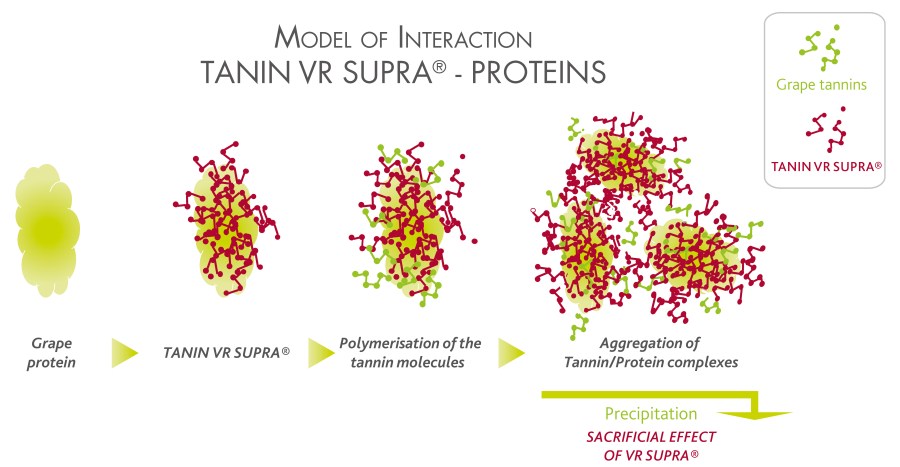With harvest in full flow, looking at using some techniques to protect the grape must is essential especially if there is risk of disease.
Tannins, for what purpose?
Hydrolysable tannins (mainly ellagic from oak or chestnut, and gallic from chestnut galls) and condensed tannins (proanthocyanidic from grapes or exotic woods) are used in winemaking for different purposes:
◆ Unstable protein precipitation.
◆ Protection and stabilization of colouring matter.
◆ Anti-oxidation.
◆ Reductive character minimization.
◆ Structure enhancement.
◆ Improves clarification.
◆ Regulate redox phenomena.
How to use tannins?
All Laffort tannins benefit from Laffort’s unique formulation called the Instant Dissolving Process (IDP); a revolutionary process for ease of use! The Instant Dissolving Process enables perfect solubility in wine and thus no preliminary dissolution of the tannins in water is required. Homogenous introduction into the bulk of the must or wine is, however, advised. It is recommended to carry out a systematic pump-over or other homogenizing action during the application. Tanin VR Supra , VR Colour, Galalcool are great tools to use during grape processing and fermentation. These tannins in winemaking have four points of interest:
◆ The “sacrificial” effect,
◆ The antioxidant effect,
◆ The co-pigmentation effect in the presence of colour components,
◆ The effect of stabilization in the presence of acetaldehyde.
Precipitation of proteins or “sacrificial” effect
Grape proteins combine and precipitate with phenolic compounds. This precipitation reduces the natural amount of grape tannins and can be limited due to the “sacrificial” effect: by using extra tannins that will combine specifically to the proteins. This “sacrificial” effect can be evaluated in the laboratory by measuring the tannins reactivity with a reference protein such as BSA. VR Supra provides a strong protective effect for natural grape phenolic compounds. Its reactivity is five times superior than other vinification tannins.
The antioxidant effect
The use of tannins has always been linked to their ability to moderate the effects of oxygen. They have antioxidant properties and protect the oxidizable compounds. It has been proven that 300 ppm of VR Supra (added in increments during fermentation) reduces the amount of dissolved O2 three fold in must at the beginning of the fermentation which limits the oxidation risk of easily oxidizable compounds.
The inhibition of laccase activity
Botrytis on grapes brings with it some laccase and polyphenol oxidase activities that are negative for wine quality. In Botrytis affected musts, the addition of VR Supra for red grapes and Galalcool for white grapes efficiently limits the negative enzymatic oxidase activities.
The copigmentation effect
Co-pigmentation comes from the association of coloured pigments with other polyphenolic compounds, usually non coloured. This association leads to stable copigments showing a more intense colour than the single coloured molecules. Red wines that are rich in co-pigments will have a more intense colour at both early and late stages of the vinification. VR Supra and VR Colour are both tannins with a high co-pigmentation ability.
Condensation effect
(stabilization of colouring matter)
Acetaldehyde molecules are involved in stabilizing simple coloured phenolic structures through reactions leading to more complex molecules. The efficiency of the tannin/anthocyanin bond via an acetaldehyde bridge can be simply demonstrated by saturating a tannin solution with acetaldehyde and then observing the evolution of turbidity over time. A benchmarking study has been done with many tannins available on the market using this method: VR Colour was more than 100 times more reactive than the closest competitor product.




